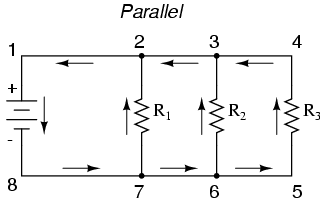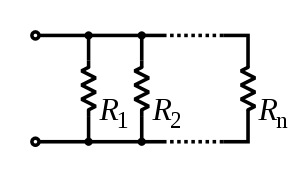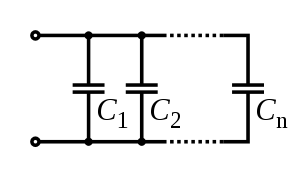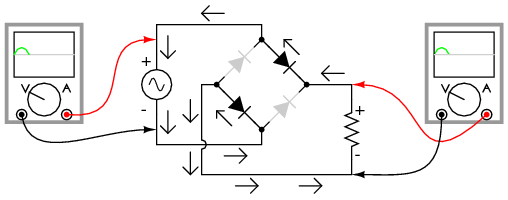Blog number:-016
Hello Everybody,
Well, I hope you all will be fine.



Hello Everybody,
Well, I hope you all will be fine.
Yesterday we had discussed on the way of connecting Electric components i.e. Series and Parallel Circuit. Today, in this session we are going to discuss about a very fundamental law called Kirchhoff's Circuit Law.
Kirchhoffs Circuit Law:-
We saw in the Blog number:-015 that a single equivalent resistance, ( Requ.) can be found when two or more resistors are connected together in either series, parallel or combinations of both, and that these circuits obey Ohm’s Law.
However, sometimes in complex circuits such as bridge or T networks, we can not simply use Ohm’s Law alone to find the voltages or currents circulating within the circuit. For these types of calculations we need certain rules which allow us to obtain the circuit equations and for this we can use Kirchhoffs Circuit Law.
Gustav Kirchhoff developed a pair or set of rules or laws which deal with the conservation of current and energy within electrical circuits. These two rules are commonly known as: Kirchhoffs Circuit Laws with one of Kirchhoffs laws dealing with the current flowing around a closed circuit, Kirchhoffs Current Law, (KCL) while the other law deals with the voltage sources present in a closed circuit, Kirchhoffs Voltage Law, (KVL).
Kirchhoffs First Law – The Current Law, (KCL)
Kirchhoffs Current Law or KCL, states that the “total current or charge entering a junction or node is exactly equal to the charge leaving the node as it has no other place to go except to leave, as no charge is lost within the node“.
In other words the algebraic sum of all the currents entering and leaving a node must be equal to zero, I(exiting) + I(entering) = 0. This idea by Kirchhoff is commonly known as the Conservation of Charge.
Kirchhoffs Current Law
Here, the 3 currents entering the node, I1, I2, I3 are all positive in value and the 2 currents leaving the node, I4 and I5 are negative in value. Then this means we can also rewrite the equation as;
I1 + I2 + I3 – I4 – I5 = 0
The term Node in an electrical circuit generally refers to a connection or junction of two or more current carrying paths or elements such as cables and components. Also for current to flow either in or out of a node a closed circuit path must exist. We can use Kirchhoff’s current law when analyzing parallel circuits.
Kirchhoffs Second Law – The Voltage Law, (KVL)
Kirchhoffs Voltage Law or KVL, states that “in any closed loop network, the total voltage around the loop is equal to the sum of all the voltage drops within the same loop” which is also equal to zero.
In other words the algebraic sum of all voltages within the loop must be equal to zero. This idea by Kirchhoff is known as the Conservation of Energy.
Kirchhoffs Voltage Law
Starting at any point in the loop continue in the same direction noting the direction of all the voltage drops, either positive or negative, and returning back to the same starting point. It is important to maintain the same direction either clockwise or anti-clockwise or the final voltage sum will not be equal to zero. We can use Kirchhoff’s voltage law when analyzing series circuits.
When analyzing either DC circuits or AC circuits using Kirchhoffs Circuit Laws a number of definitions and terminologies are used to describe the parts of the circuit being analysed such as: node, paths, branches, loops and meshes. These terms are used frequently in circuit analysis so it is important to understand them.
Common DC Circuit Theory Terms:
- • Circuit – a circuit is a closed loop conducting path in which an electrical current flows.
- • Path – a single line of connecting elements or sources.
- • Node – a node is a junction, connection or terminal within a circuit were two or more circuit elements are connected or joined together giving a connection point between two or more branches. A node is indicated by a dot.
- • Branch – a branch is a single or group of components such as resistors or a source which are connected between two nodes.
- • Loop – a loop is a simple closed path in a circuit in which no circuit element or node is encountered more than once.
- • Mesh – a mesh is a single open loop that does not have a closed path. There are no components inside a mesh.
- Note that:Components are said to be connected together in Series if the same current value flows through all the components.Components are said to be connected together in Parallel if they have the same voltage applied across them.
Thank you.






























